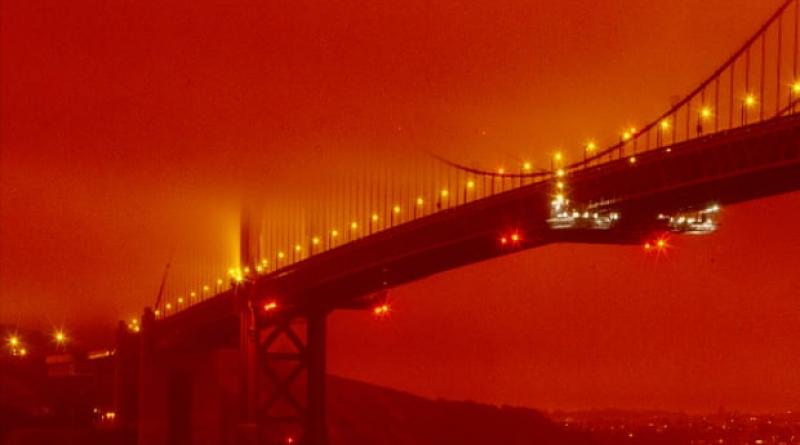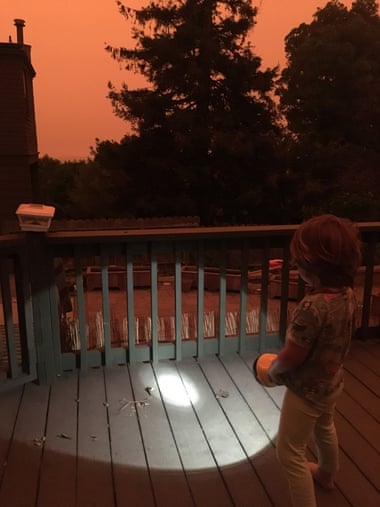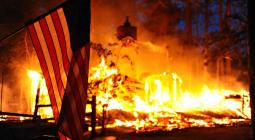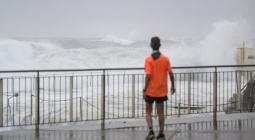Is San Francisco's nightmarish echo of Sydney's summer now a template for fire seasons to come?

Just as in Australia, landscape along the US west coast has evolved to withstand fire. But precedents are collapsing all around us.
People love to say that Sydney is like San Francisco: a city built around the water with a temperate climate and a pretty bridge. At certain moments the slant of light on the water of San Francisco Bay looks uncannily like Sydney. Australian foliage thrives here — eucalypts, flowering gums, bottle brush, colourful lantana. Over the seven years that I have spent here in the Bay, after growing up in Sydney and living on the US east coast for a long stretch, those echoes usually bring a nostalgic frisson, a bittersweet longing for home.
Now, in September 2020, the reminders of Sydney are frankly alarming. I returned to Australia exactly one year ago with my family for a long sabbatical, just in time for the unprecedented horrors of the bushfire season when smoke choked the cities, ash rained down, and an estimated three billion animals perished. We came back to Berkeley a few weeks before the coronavirus lockdown in March. Over the past several weeks, the fires raging along the west coast have delivered sharp parallels with our Sydney summer.
The creepy glint of orange sun reflected in car hoods, the awful thickness to the occluded light, the suffocating smoke, the ash falling and settling like snow, the air quality readings that break the charts – it’s all a nightmarish echo of Sydney. It’s also a reminder of 2018, when deadly fires across California blanketed the Bay in smoke. That summer marked our first purchase of N-95 masks, which we now wear everywhere, not just to filter the smoke but also the virus.
Australian friends are reaching out to me right now after seeing footage of the startling orange San Francisco skies, and photos I’ve posted on social media of my four-year-old son shining the flashlight on our deck in Berkeley through the twilight morning of 9 September, when it stayed dark all day.

Friends sympathise with how terrible it is to be going through this again. A few of them reflect anxiously on the possibility that they, too, could be looking forward to a repeat experience.
My own childhood in Sydney included nervous weeks in spring marked by the smell of backburning, the trauma of Ash Wednesday in 1983 and other devastating fire seasons. I remember Christmas Day, 2001, visiting Sydney from the US, the strange sight of ash falling on the pool in my parents’ backyard as multiple fires burned around the city.
This past summer in Australia brought those experiences to mind and then eclipsed them in a profound, terrifying way. As I stepped through clouds of swirling black ash across searingly hot asphalt on the school car park, recoiled from washing hung on the line, rank with the smell of smoke, plugged every gap in the window and door frames, listened to fire ecologists speak about forests burned beyond recovery, I began to believe that this exceptional summer was actually a template for the seasons to come. Those past years would no longer be relevant points of comparison: this monster was destined to be the new reference point, the “new normal”.
It can’t be like this again anytime soon, we told ourselves in Sydney, just as we told ourselves here in 2018. It is an instinctive human response, I suppose, to get through a disaster by imagining that it’s a one-time thing, a rarity. But climate change means that the seasons will just keep getting hotter. Records will keep being broken. Will this be the last year we can get away with calling the fires “unprecedented”?
Just as in Australia, much of the landscape along the west coast has evolved to withstand fire. So far, many significant groups of ancient redwoods have survived the fires that have torn through west coast forests. Shocking images came out of the Big Basin Redwoods state park last week of massive trees lit up from the inside like giant ovens, but most of them have remained alive.
The night of 9 September I watched an episode of The Expanse, a TV series set 300 years into the future. Just as every novel I read during lockdown seems to be an allegory for quarantine, exile or imprisonment, every other story now looks like a reflection of contagion, conflagration, apocalypse. In this episode, the battle-weary crew of protagonists are forced to rename their beloved ship. There is a botanist aboard, a new crew member, who suggests they call it Contorta, for the tree Pinus Contorta. “In order for them to survive, they have to die with fire,” he says. “The seeds come out of the fire.” Like some eucalypts, this pine tree, common in California, is “serotinous”, meaning it has adapted to fire.
The metaphoric scope of fire is inexhaustible, and at these times it is so tempting to reach for images of the flames of rebirth, fire that contorts and remakes things. The idea of the serotinous pine, its narrative of adaptation and survival, offers a kind of poetic consolation in the face of forests reduced to black sticks and whole towns turned to ash. I know that we desperately need stories of resilience, even as I loathe the way conservative ruling politicians in Australia have co-opted this language. With resilience and agility we can simply adapt to climate change, they argue, instead of trying to avoid it.
But even these tremendously resilient species may not be able to withstand year after year of ever more intense and prolonged fire seasons, record-breaking heat and drought. We don’t know, because precedents and models are collapsing all around us. How will climate change and its disasters reshape natural cycles of regeneration? How will we face a repeat anytime soon of these unbearable seasons of death? How many more traumatic echoes, reiterations, eerie similarities, can we handle?
“Night is day in Berkeley today — but it’s not the apocalypse,” claimed a headline on 9 September. The story explained plausibly that the red sky was caused by light-filtering effects of smoke floating high above and that air quality in the Bay was surprisingly good, but it failed to reassure me. This is what the end of the world looks like, surely, if only we could bear the grief that envelops that vision right in front of us, in our lungs, under our fingers as we draw a smiley face in the ash on the car to make the small child laugh – because making light of the end of the world is now our full-time job.
14 September 2020
The Guardian




